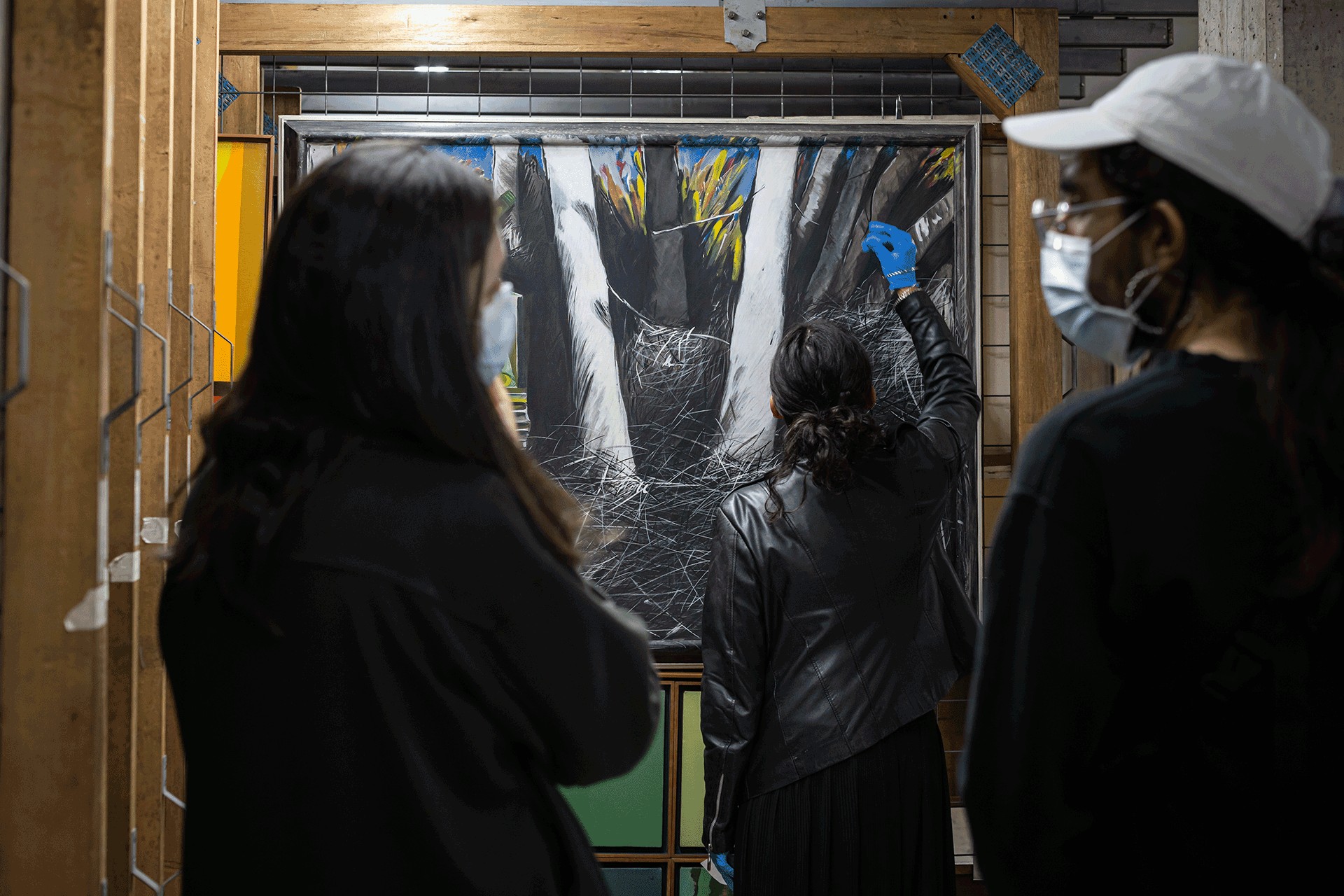
This programme offers emerging thinkers and researchers from diverse disciplines the opportunity to engage with the Bogota Museum of Modern Art, fostering research, dialogue, and co-creation. Currently, four artists, curators, and independent researchers are developing their research-creation projects.
This year, the following residencies were offered: Digital, Research, and Curatorial.
Digital Residencies
The MAMBO Digital Residency emerged as a response to the need to rethink the role of digital tools in museums. Aimed at individuals interested in researching and experimenting with the use of digital technologies in museum contexts, this residency focuses on three main areas: the digitization of collections and archives, the digital reinterpretation of works from the MAMBO collection, and the development of new curatorial and educational practices adapted to virtual environments.
The goal of the residency is to facilitate the development of research-creation projects that address the museum’s content from a digital perspective. Residents are invited to propose initiatives that explore the potential of digital technologies to create interactive experiences and new forms of access to the collection. These projects may include digital artistic responses, the design of applications and interactive platforms, immersive virtual tours, the digitization of historical archives, and the production of multimedia content for digital platforms.
The winners of the first edition of the Digital Residency are Sebastián Mira and Digital Visual Studies collective.
“pixel quadrants” by Sebastián Mira
pixel quadrants consists of the digital reinterpretation of seven paintings from the MAMBO Collection by Colombian artist Rodrigo Callejas. This reinterpretation was carried out through gamified and navigable experiences on the multiplayer platform spatial.io. Through this proposal, Sebastián explores landscape art via interactive interfaces and reflects on how we perceive and integrate with the world. By reimagining the genre of landscape in the digital context, he invites us to reconsider the relationship between the physical and the virtual, creating a bridge between the museum and digital generations, as well as distant audiences.
![]()
Sebastián’s project was developed in two stages: in the first, he selected works from the MAMBO Collection that explore different approaches to landscape art; in the second, he worked on the digital reinterpretation of these seven pieces, experimenting with various trials and adaptations to transfer them into the virtual environment.
pixel quadrants focuses on the exploration of virtual landscape art and hypermateriality—concepts that question the relationship between the physical and the digital in the production and exhibition of art. Digitization is not only used as a medium but as a creative tool to generate experiences and forms of interaction with the pieces. In this sense, Sebastián reflects on the role of the web and video games as exhibition platforms, highlighting their ability to create immersive spaces where the boundaries between the material and the virtual blur.
Upon entering spatial.io, a vast, white, sterile landscape greets the visitor. In the center is a barbed-wire structure arranged in a grid-like form, with sections containing portals to eight different worlds: seven of them inspired by Rodrigo Callejas’ paintings and one based on the physical layout of the MAMBO. Entering these portals, the visitor plunges into various pictorial atmospheres, seemingly empty, that invite exploration and traversal.
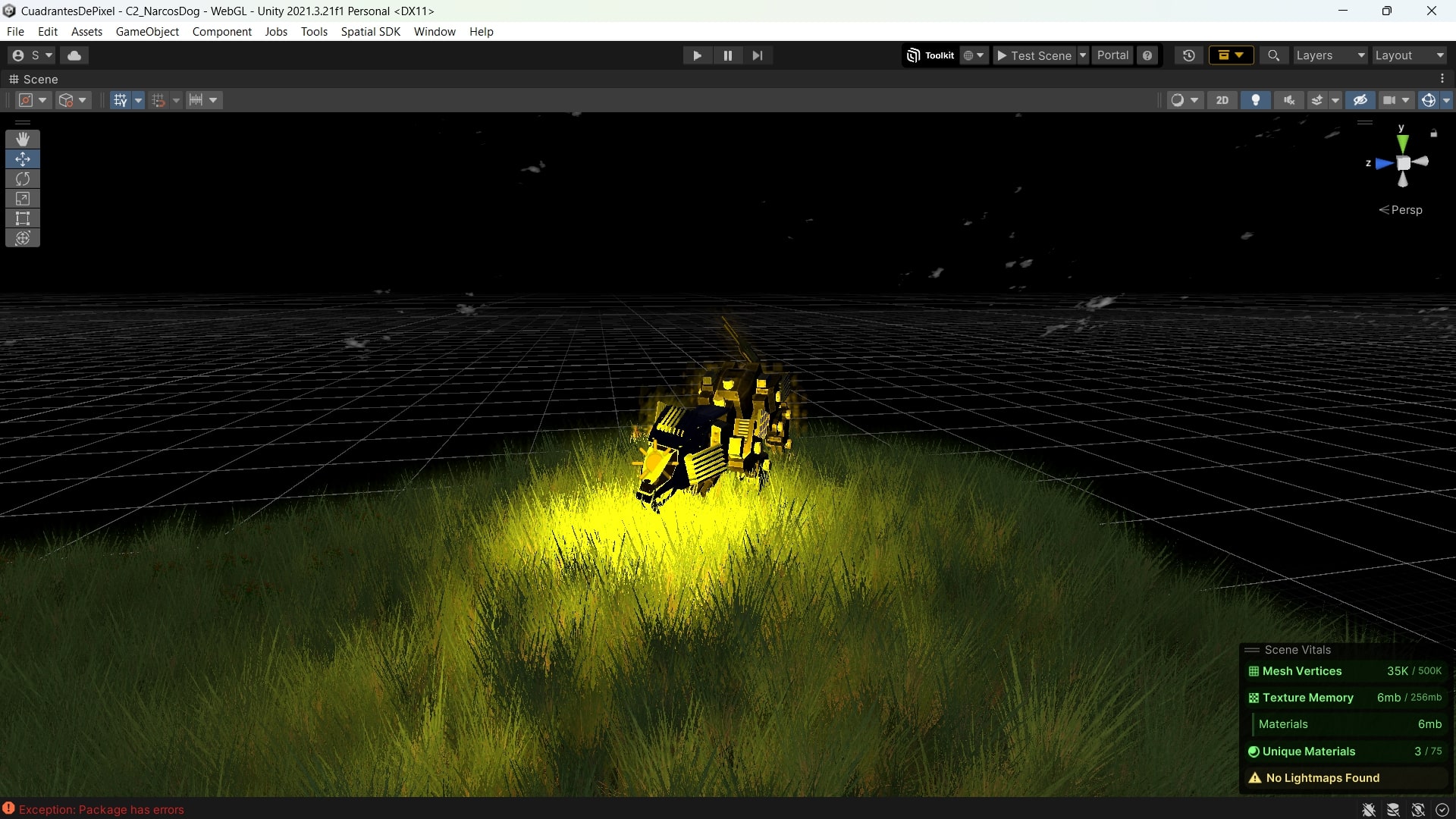
Scene based on Narco’s Dog (1987) by Rodrigo Callejas. MAMBO Collection
This process raises questions about the implications of digitizing collections in museums and how we engage with works in a digital format. Ultimately, digitization acts as a bridge, helping cultural institutions bring their content closer to digital generations and audiences who, although unable to visit the museum physically, have access to internet-connected devices. pixel quadrants uses digital tools to rethink how collections can be experienced in the digital age.
Clic here to visit Sebastian’s project.
About Sebastián Mira
Sebastián Mira is an artist and curator from Colombia, known for his exploration of landscape in virtual realms and the relationship between physical and digital spaces. His work has been showcased internationally, including in Amsterdam, Bogotá, and New York. He co-directs VIRREINA and MSD, spaces dedicated to contemporary land art practices and digital experiences.
“Bogotá (Re)imagined: Explorations with AI and the MAMBO Digital Collection” by Digital Visual Studies (DVS)
This project presents a curatorial approach to MAMBO’s digital collection, using artificial intelligence to (re)imagine Bogotá. AI models are employed to analyze the artworks and extract visual and textual features, which are then integrated into the city’s context. The project aims to redefine both the collection and the city, creating artistic experiences through this technology. The initiative seeks to offer new perspectives on the MAMBO Collection and Bogotá’s urban landscape, while also addressing the ethical and cultural issues surrounding the use of such technologies. Through this residency, the goal is to explore the possibilities and challenges of AI-assisted curating

Digital Visual Studies (DVS) is a multidisciplinary lab based in Switzerland, affiliated with the Max Planck Society and the University of Zurich. The team includes:
- Ana María Zapata: Art historian and Editor-in-Chief of the International Journal for Digital Art History.
- Darío Negueruela del Castillo: Scientific Coordinator with expertise in AI models for cultural research.
- Ludovica Schaerf and Pepe Ballesteros: Doctoral students specialising in computer science and digital humanities.
- Lacopo Neri: Architect skilled in AI research platforms.
- Andrea Alfarano: Engineer focusing on AI models and deep learning.
- Tristan Weddigen: Director of the Max Planck Institute for Art History – Bibliotheca Hertziana in Rome.
Curatorial Residency
This residency is aimed at graduate students, recent graduates, or emerging scholars interested in curatorial practices and museum studies, who seek to enhance their skills through active participation with MAMBO’s Curatorial Department, with a focus on digital practices. The selected resident will gain practical experience in the conceptualization, planning, and research for the third cycle of MAMBO’s exhibition programming, collaborate on the development of projects related to the exhibition cycle, and receive mentorship from the curators and museum staff.
The winner of the first edition of the Curatorial Residency is Federico Reyes.
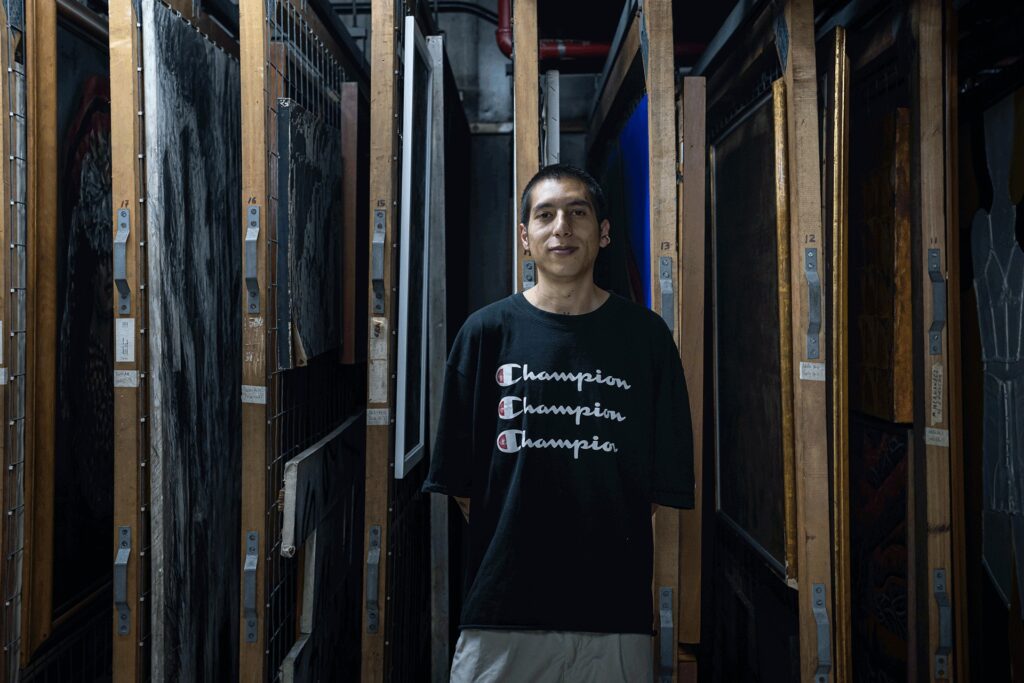
my computer is afraid of dying is the title of the web project created by Federico Reyes Mesa in response to the research and conceptualization process for the current exhibition Collection on stage #5: Fetish: Material Conversations, which features 42 works from the MAMBO Collection. The project’s title is a metaphor for Federico’s first day as a resident at MAMBO, when his computer stopped working. It reflects on concepts such as virtual relationality, artificial intelligence, and the relationship between people and computational technologies—elements central to the current exhibition cycle at the Museum.
Federico actively participated in the research and conceptualization processes of Fetish exhibition, part of MAMBO’s third exhibition cycle in 2024. He engaged in working sessions with the Museum’s curatorial team, allowing him to explore both the theoretical aspects of curating and the direct organization and planning of the exhibition.
Through this collaboration, Federico worked with artworks from the collection, exploring the historical and conceptual relationship between the artists and the Museum, as well as how these pieces were integrated into the collection. He also identified additional works that aligned with the conceptual frameworks of Fetiche, further enriching the curatorial process. His participation not only focused on analyzing the works but also on deepening the artists’ trajectories, examining their ideas, motivations, and themes linked to the curatorial categories developed for the exhibition. This first stage of the residency concluded with the creation of the curatorial text for the Animismo / Espiritismo section and the review of other curatorial texts, to which he contributed his perspective and interpretation.
The residency also involved developing a digital response to the earlier processes of conceptualization and research, exploring curatorial possibilities within the institution. In this way, Federico developed my computer is afraid of dying, a web project that brings together a series of actions and choreographies situated between the creative, museographic, and curatorial practices, with techno-mysticism as the central concept. Through this web project, Federico addresses various concepts derived from the curatorial research, such as the untranslatable, the void, web surfing, internet culture, spirituality, and opacity.
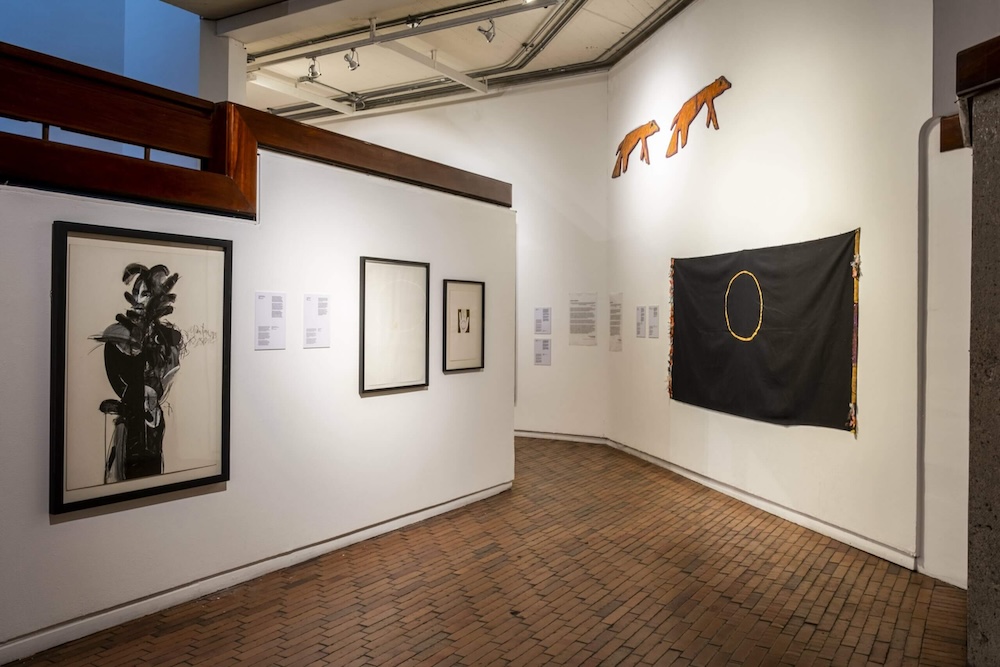
Installation view Collection on stage #5: Fetish: Material Conversations. Photo by Juan Yaruro. Courtesy of the Bogota Museum of Modern Art.
About Federico
Federico Reyes (Colombia) is an artist, editorial designer, and he holds a master’s degree in Cultural Studies. He has worked as an advisor on research-creation processes for the 46th National Salon of Artists, the Women, Arts, and Care Program, and various music programs at the Ministry of Cultures, Arts, and Knowledge in Colombia. He has also been a production assistant and designer for Espacio Odeón, a production and programming assistant for Fundación Ambulante Colombia, and an editorial design consultant for the IOM.
His interest in the poetic dimensions of virtual relationality and internet culture has allowed him to explore, through his artistic practice, diverse media such as textual art, expanded graphics, digital and analog printing, poetic computation, digital craft, net art, and electronic art. He has participated in group exhibitions in Bogotá, Buenos Aires, Miami, and New York.
Researcher-in-Residence
The Researcher in Residence programme offers researchers the opportunity to conduct in-depth investigations related to the MAMBO Collection, archive, and exhibition programme. Using digital tools to access and engage with the collection, participants may explore interdisciplinary connections, historical contexts, or thematic analyses, contributing to the scholarly discourse surrounding the museum’s holdings. Researchers are encouraged to utilise the digitised artworks at MAMBO and conduct research around them.
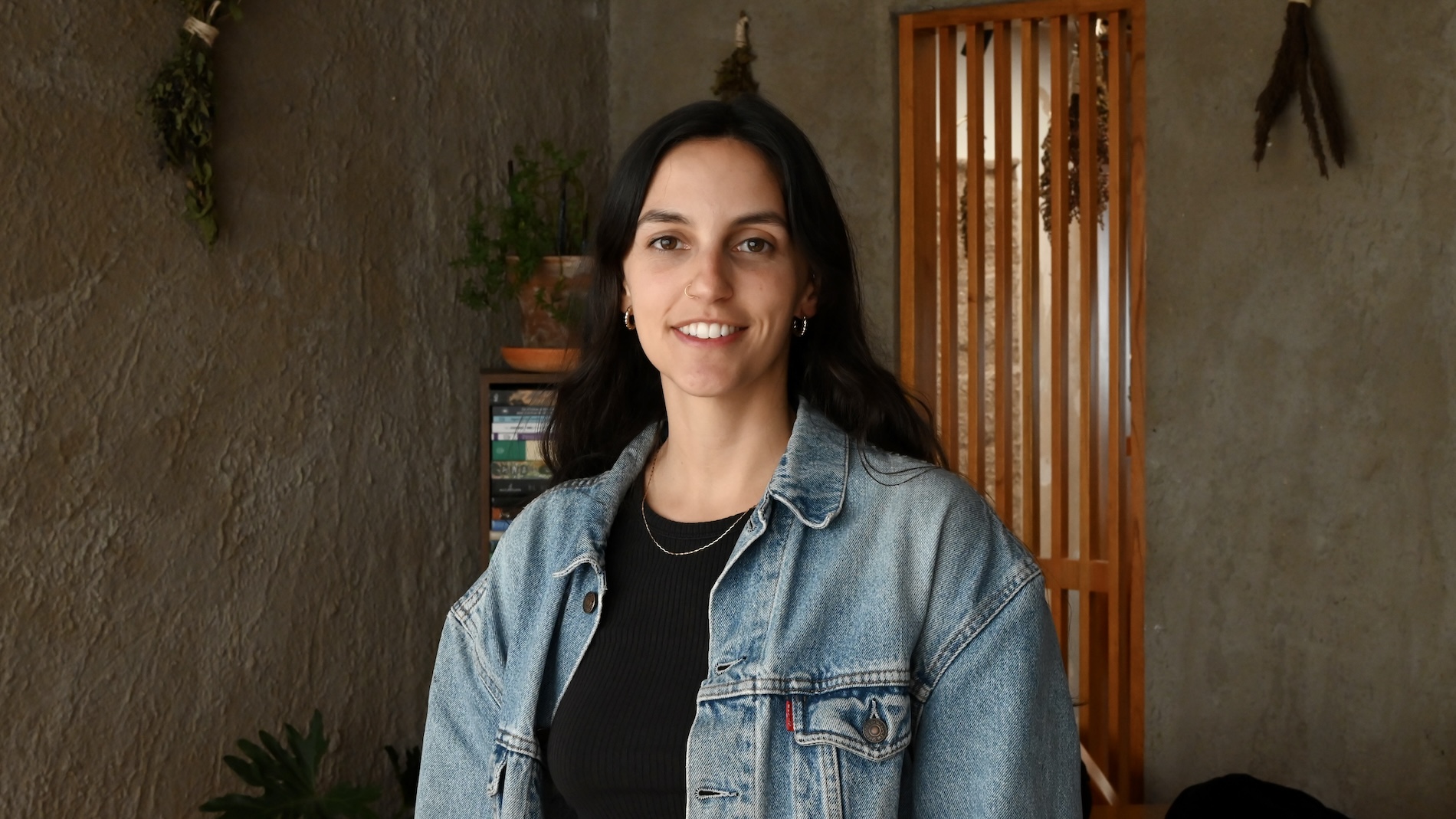
The recipient of the inaugural Researcher in Residence award was Júlia Farràs (Spain) for her project “What Feeds Us? From Hearts to Stomachs in the MAMBO Collection.”
“What Feeds Us?” explores the intersection between hunger and love, fundamental forces that nourish both the body and the spirit. As a form of invitation, the project seeks to explore works in the MAMBO Collection that address hunger, food, and dining, understanding that these elements go beyond satisfying physical needs to being deeply intertwined with culture, memory, and identity, questioning their emotional and physical connections.
Júlia conducted a review of around 90 works from MAMBO collection, based on concepts such as hunger, identity, and food. These works were organized into different thematic areas: food and identity; bars and restaurants; kitchen; eating and drinking; hunger; sensory and material interaction; still life and bodegones; trades and nature; rituals and customs; symbolism; and social aspects.
Júlia took the role of a curator, connecting Colombian chefs with the selected artworks from museum’s collection. As the project evolved, the creative process was documented through videos, audio, and text. These videos showcase collaborations between the chefs and the MAMBO Collection, depicting how the chefs (Jefferson García, Laura Hernández, Tabi Isabel Castellanos, and Cristina Consuegra) were inspired by the artworks to develop their culinary proposals.
Finally, a website was developed to integrate all the information gathered during the project, including interactions with the chefs, analysis of the works, and reflections, consolidating a digital research catalogue.
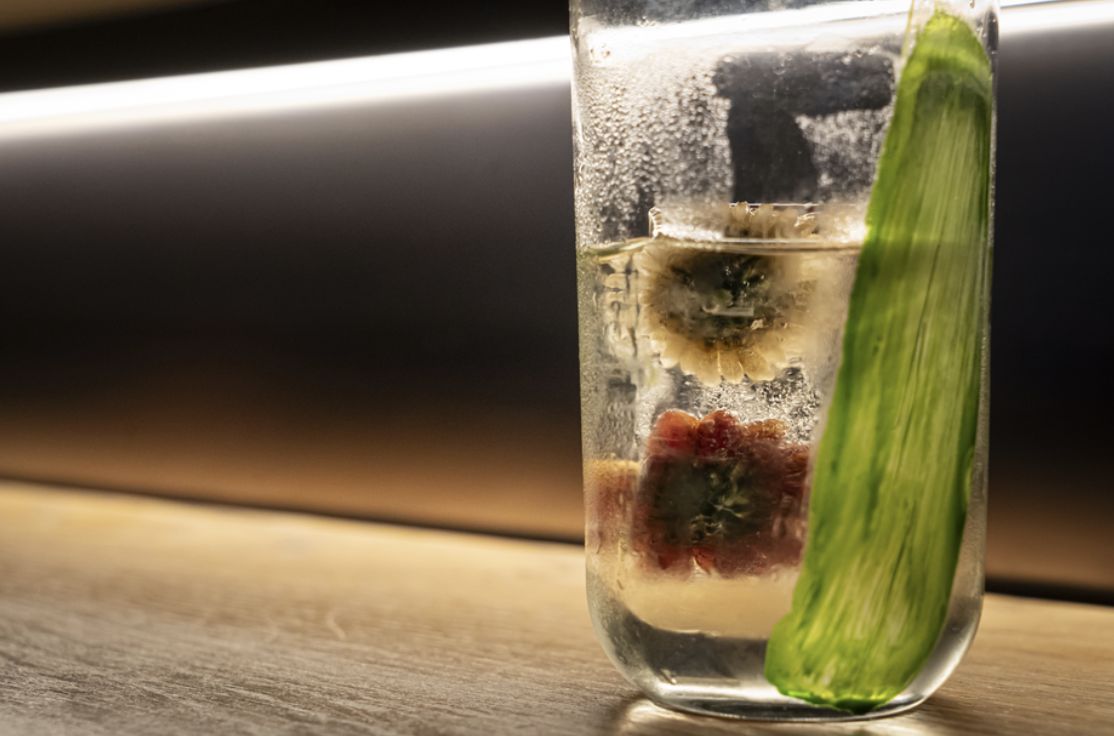
Collaboration with sommelier Laura Hernández. Photo by Juan Yaruro.
Júlia Farràs Marginedas (Spain) works across Humanities, Anthropology, and cultural management. She holds an honours degree in Humanities from Pompeu Fabra University and a master’s degree in Anthropology and Ethnography from the University of Barcelona, where she is currently pursuing a Ph.D. in Society and Culture.
Dividing her time between Barcelona and Colombia, Júlia has collaborated on research and cultural management projects with various organisations, including the Spanish Embassy in Colombia, the Truth Commission, Imaginart Gallery, Rebobinart, and the Gladys Palmera Foundation. Specialising in creating inclusive curatorial narratives through participatory methodologies, she currently works at the Spanish Embassy in Colombia and is developing independent curatorial projects.